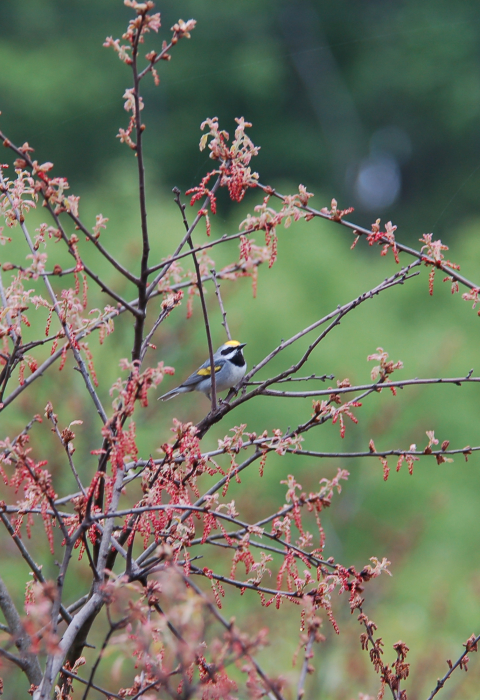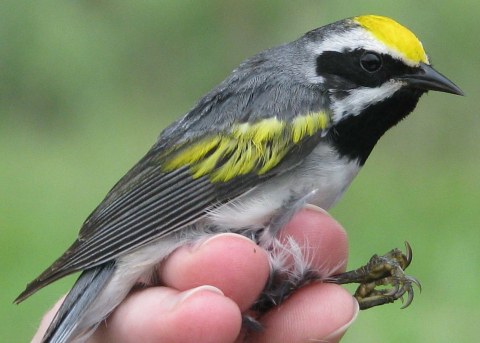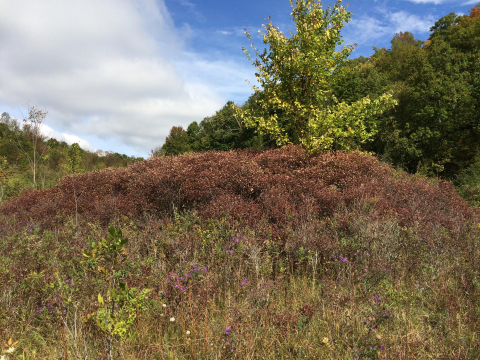Shrub-Loving Warblers
The males of this small warbler species have striking silvery, yellow, black, and white plumage. In the Northeast, the golden-winged warbler breeds in western Vermont, parts of New York, and the Appalachian Mountains in the Mid-Atlantic region. (The largest remaining population is in the western Great Lakes states.)
In spring and summer, golden-winged warblers nest on the ground in shrubland and young forest with a mix of grasses, sedges, weeds, and shrubs. They also breed on recently logged lands. After fledglings leave the nest, their parents take them to areas of forest with diverse plants down at ground level where the young can feed on insects.
A Steep Population Decline
Over the past five decades, the golden-winged warbler (Vermivora chrysoptera) has suffered one of the steepest population declines of any North American songbird. The problem stems from habitat loss caused by shrubby fields growing up and becoming mature forest, which lacks the low, thick cover golden-wings need. Also, these warblers often hybridize with closely related blue-winged warblers (Vermivora cyanoptera), which scientists believe has contributed to the drop in golden-wing numbers.
Learn more about the golden-winged warbler's range, biology, and behavior at Cornell Lab's All About Birds website.
The Golden-Winged Warbler Working Group has developed a 216-page Status Review and Conservation Plan aimed at increasing the population 50 percent by 2050.
Making and Refreshing Habitat
Habitats used by golden-winged warblers can be created or refreshed through prescribed burning or a timber harvest that leaves a few trees standing. Conservationists can also manage areas of native shrubs by removing trees before they get too big and start shading out the shrubs and other low plants.
For example, Audubon Vermont and The Nature Conservancy are working at Helen W. Buckner Memorial Preserve to provide a sustainable habitat for a local population of golden-winged warblers.
Best Management Practices from the Golden-Winged Warbler Working Group explain how to tailor different types of habitats to deliver the greatest benefits to golden-winged warblers in various regions in the Northeast.



